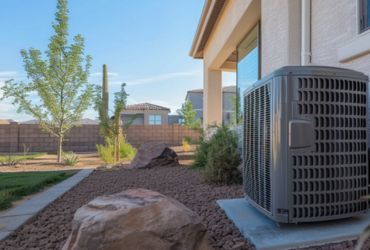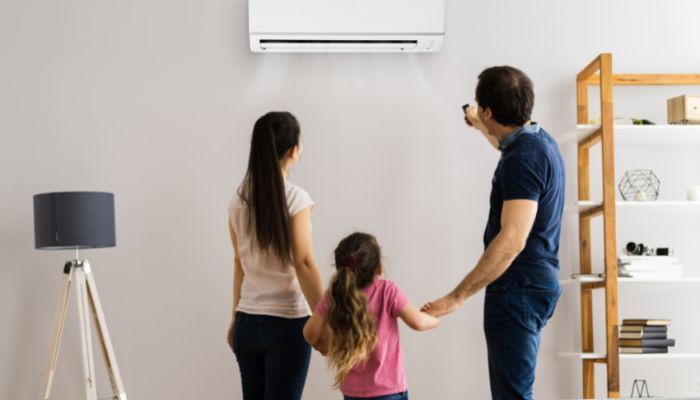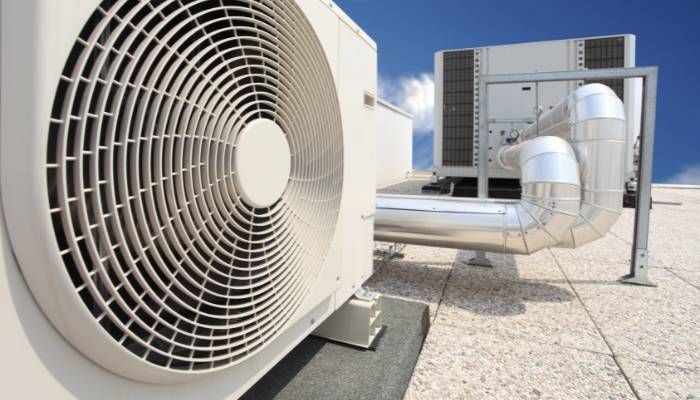How To Prepare Your AC System For Spring In Tucson
TL;DR: Prepare your AC system for spring in Tucson by cleaning the outdoor unit, replacing air filters, and scheduling a professional HVAC check. Ensure optimal performance and efficiency to beat the heat. Simple DIY tips complement professional maintenance for a worry-free summer.
Warm temperatures in the desert are headed our way and steadily climbing, which means it’s time to think about your Spring Maintenance and Repairs for your HVAC System to ensure your home stays cool and comfortable throughout spring and summer. . Preparing your AC for the spring isn’t just about ensuring comfort during the scorching summer months; it’s about optimizing system efficiency, reducing energy costs, and preventing mid-summer breakdowns.
In this guide, we’ll walk you through the essential steps to get your cooling system ready for the heat, blending DIY advice with tips on when to call in the professionals. Whether you’re a seasoned Tucsonan or new to the area, these insights will help you stay cool and comfortable, all while safeguarding your investment in your home’s HVAC system.
Why Spring Maintenance is Crucial for Your AC System in Tucson
In Tucson, where the sun’s warmth rapidly intensifies as spring progresses, preparing your air conditioning system for the season is crucial, not just for ensuring indoor comfort but also for maintaining system efficiency and reliability. The dormant months can leave your AC less than ready to tackle the desert heat, with accumulated dust and debris potentially straining its operation. This not only hikes up energy bills due to reduced efficiency but also increases the risk of system failure just when you need cooling the most. Spring maintenance serves as a preemptive strike, identifying issues such as refrigerant leaks or electrical malfunctions early on to avoid unexpected breakdowns during the peak summer months.
Moreover, the role of your AC system extends beyond merely cooling your space; it significantly influences the indoor air quality. Dust, allergens, and other particulates that have settled in your system over the cooler months can compromise the air you breathe as soon as you switch the AC on. Addressing these issues through thorough spring cleaning not only ensures the air in your home remains healthy but also extends the lifespan of your AC system. In a city like Tucson, where the transition from mild spring to scorching summer can occur swiftly, taking proactive steps to ensure your AC is in top shape is essential for maintaining comfort, health, and overall system longevity.
DIY Maintenance Tips to Prepare Your AC System for Spring
While professional servicing is essential for comprehensive maintenance, there are several DIY tasks that Tucson homeowners can undertake to ensure their AC system remains in optimal condition. Performing these tasks regularly can help maintain your system’s efficiency, prolong its lifespan, and even prevent costly repairs down the line. Here’s a list of manageable maintenance tasks that you can do yourself:
Keep the Area Around the Outdoor Unit Clear: Ensure that the outdoor component of your AC system is free from debris, such as leaves, branches, and dirt. Maintain at least a 2-foot clearance around the unit to facilitate proper airflow and prevent overheating. This simple task can significantly impact the efficiency and longevity of your system.
Clean the AC Unit’s Fins: The fins on the outdoor unit can become clogged with dust and debris, reducing airflow and impairing the system’s ability to cool your home. Gently brush off the debris with a soft brush, and use a garden hose to rinse the fins from the inside out. Be careful not to use a pressure washer, as high pressure can damage the fins.
Check and Secure Electrical Connections: Loose electrical connections can cause your system to run inefficiently or even pose a safety hazard. Ensure that all electrical connections are tight and secure. If you’re not comfortable working with electricity, this is a task best left to professionals.
Monitor Thermostat Performance: Regularly check your thermostat to ensure it’s working correctly. If you notice discrepancies between the set temperature and the actual temperature in your home, it may be time to replace the batteries or consider upgrading to a more efficient model.
Listen for Unusual Noises: Pay attention to the sounds your AC system makes. Banging, rattling, or hissing sounds can indicate a problem, such as loose parts, a refrigerant leak, or a malfunctioning compressor. Identifying these issues early can prevent more significant problems later.
Inspect and Clean Air Vents: Ensure that all air vents in your home are open and free from obstruction. Use a vacuum to remove dust and debris from the vents to improve air flow and enhance your system’s efficiency. This not only helps your AC but also improves indoor air quality.
By incorporating these DIY maintenance tasks into your routine, you can contribute significantly to the health and efficiency of your AC system. Remember, though, that these tasks complement, rather than replace, professional maintenance. Together, they ensure that your system is ready to keep you cool through the hot Tucson spring and summer.
The Importance of Professional HVAC Maintenance
As spring approaches in Tucson, with its promise of rising temperatures, the importance of having your air conditioning system professionally serviced cannot be overstated. While DIY maintenance tasks are beneficial, a professional HVAC technician brings a level of expertise and thoroughness that goes beyond what most homeowners can achieve on their own. Here’s why hiring a professional HVAC company for spring maintenance is crucial for your system’s efficiency, longevity, and reliability.
Comprehensive System Inspection and Service: Professional technicians perform a detailed inspection of your entire system, including areas not typically accessible to homeowners. They check for issues like refrigerant leaks, efficient thermostat operation, electrical system integrity, and proper airflow. This comprehensive approach ensures that every component of your AC system is optimized for peak performance.
Expert Identification and Resolution of Potential Issues: HVAC professionals have the training and experience to identify subtle signs of wear and tear or impending failure that the untrained eye might miss. Early detection and repair of such issues can prevent costly breakdowns during the hottest parts of the year, ensuring your comfort and safety.
Enhanced Efficiency and Energy Savings: A well-maintained AC system operates more efficiently, which translates into energy savings and reduced utility bills. Professional maintenance includes tuning up the system to ensure it runs as efficiently as possible. Technicians also provide advice on any upgrades or adjustments that could further improve efficiency and save money in the long run.
Prolonged System Lifespan: Regular professional maintenance extends the life of your AC system by preventing excessive wear and tear on its components. This not only saves you money on premature replacement costs but also ensures that your system remains reliable for years to come.
Safety: HVAC systems involve complex electrical components and potentially hazardous materials like refrigerants. Professional technicians are trained to handle these elements safely, reducing the risk of injury or property damage that could occur with DIY attempts.
Warranty Compliance: Many AC systems come with warranties that require regular professional maintenance to remain valid. By hiring a professional HVAC company for spring maintenance, you help ensure that your system’s warranty stays intact, providing added protection for your investment.
In summary, while performing basic maintenance tasks yourself is beneficial, the expertise and comprehensive service offered by professional HVAC technicians are indispensable. Their ability to thoroughly inspect, maintain, and repair your system ensures that your AC runs smoothly, efficiently, and safely throughout the scorching Tucson spring and summer. Investing in professional spring maintenance is an investment in your comfort, peace of mind, and the long-term health of your air conditioning system.
Preparing for the Heat: Upgrades and Replacements
Preparing for the heat, especially in regions where summer temperatures soar, necessitates strategic upgrades and replacements within your home to ensure comfort, efficiency, and safety. One critical area of focus should be your cooling system. Aging air conditioners or inefficient fans not only struggle to keep up with the demands of a hot day but also consume excessive energy, leading to inflated electricity bills.
Considering an upgrade to a more energy-efficient air conditioning system, or investing in smart fans that automatically adjust speeds based on the room temperature, can make a significant difference. Additionally, replacing old, leaky windows with double-glazed or tinted glass options can help keep the heat out and the cool air in, further enhancing your home’s ability to maintain a comfortable temperature without over-relying on artificial cooling.
Professional HVAC Services Near Your
In conclusion, preparing your AC system for spring in Tucson is an essential step towards ensuring a comfortable, efficient, and hassle-free summer. By engaging in regular maintenance, cleaning, and timely upgrades or repairs, homeowners can significantly enhance the performance and longevity of their cooling systems. With Tucson’s unique climate challenges, taking proactive measures not only safeguards against unexpected breakdowns but also optimizes energy use, ultimately leading to lower utility bills and a reduced environmental footprint. A little preparation goes a long way in ensuring that your home remains a cool sanctuary throughout the scorching months ahead.
As you embark on preparing your AC system for the spring in Tucson, there’s no better partner for your maintenance and upgrade needs than Cummings Plumbing, Heating, Cooling, and Electrical. With years of experience navigating the unique challenges of the Tucson climate, Cummings offers a comprehensive range of services tailored to ensure your cooling system operates at peak efficiency when you need it most.
From routine maintenance checks and professional cleanings to the latest in energy-efficient upgrades and repairs, their team of certified professionals is dedicated to providing top-notch service and expert advice. Trust Cummings to keep your home comfortable, your energy bills low, and your AC system running smoothly throughout the spring and beyond!
Frequently Asked Questions About HVAC Services
How often should I change the air filters in my AC system?
In the Tucson area, given the high dust levels and usage patterns, it’s recommended to check your air filters monthly and replace them at least every 60-90 days. During periods of high use or if you have pets, more frequent changes may be necessary to ensure optimal air quality and system efficiency.
Is it really necessary to have a professional HVAC service check my AC system?
Yes, professional servicing is crucial for maintaining the efficiency, safety, and longevity of your AC system. A professional can detect issues that aren’t visible to the untrained eye, such as refrigerant leaks or electrical issues, and can ensure your system is prepared to handle the Tucson heat. It’s recommended to schedule this service annually, ideally in the spring.
Can I perform any part of the AC system maintenance myself?
Yes, there are several maintenance tasks you can do yourself, such as cleaning or replacing the air filters, clearing debris from around the outdoor unit, and making sure all your vents are open and unobstructed. However, for more technical aspects like refrigerant levels, electrical components, and ductwork inspection, you should rely on a professional.
Why is it important to check the insulation on refrigerant lines?
Insulation on refrigerant lines helps maintain the efficiency of the heat transfer between your indoor and outdoor units. Over time, insulation can degrade due to weather or pest activity, leading to energy loss and reduced cooling efficiency. Checking and replacing damaged insulation is a simple step that can have a significant impact on your AC system’s performance.





